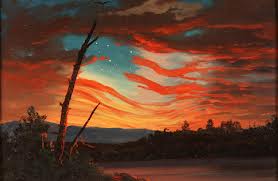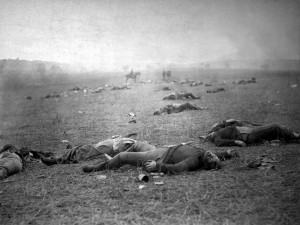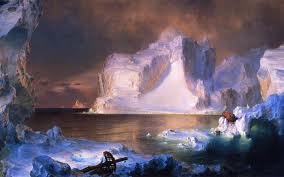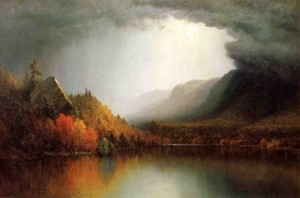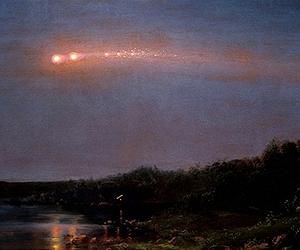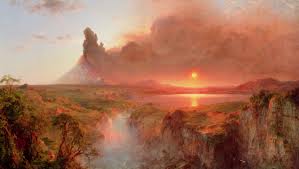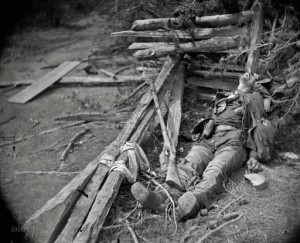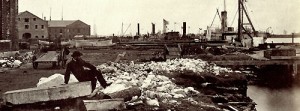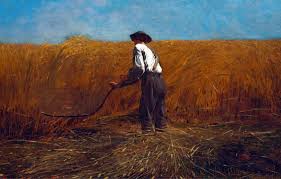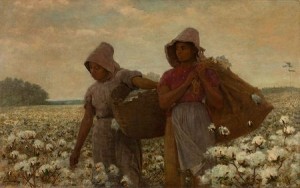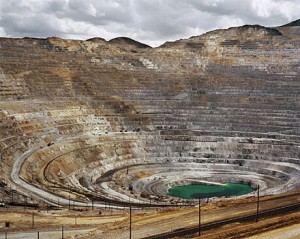Eleanor Harvey’s groundbreaking exhibition The Civil War and American Art
Eleanor Jones Harvey exhibition “The Civil War and American Art” is a fundamental reinterpretation of American painting. As we are marking the 150th anniversary of the Battle of Gettysburg, and the eve of the Fourth of July, it is a fitting moment to honor this amazing work of scholarship. Here is Timothy O’Sullivan’s photograph of the Battle of Gettsyburg “A Harvest of Death”. There are no heroes here.
When I saw the exhibition at the Metropolitan Museum of Art in early June, I was astounded at the new perspectives I gained on paintings I have known and looked at for decades. In addition, the book that accompanies the exhibition, which is entirely written by Eleanor Harvey rather than a collection of essays by various scholars, is a beautifully written tour de force of insightful analysis of the art. The sumptuously reproduced images give us the opportunity to look as closely as the author.
In this review I will emphasize the theme of landscape, although in the exhibition abolition, slavery, and racial relations are all included.
The text uses only writing contemporary with the war as sources. So for example Frederick Church’s painting of Icebergs, was retitled The North, on the day after the war began, in order to suggest that this landscape was associated with the unsullied moral stance of the North.
Harvey, in a lecture which you can view here Part I and here Part II online, reveals that she has been working on this exhibition for thirty years. I am not surprised. Her careful study of the works as well as the nineteenth century sources has yielded an invaluable contribution to our perspectives on nineteenth American art, our understanding of the relationship between art and war, the relationship between artists and national turmoil, that completely up ends former interpretations. The cliché was that artists, especially landscape artists, “took a pass” on the war, as Harvey succinctly puts it. But a second look at this painting of A Coming Thunderstorm” by Sanford Gifford tells a different story. The thunderstorm is about to descend on the land. This painting was actually owned by Edwin Booth the brother of the man who assassinated President Lincoln very shortly after the end of the war. So in this case, the painting has even more portends of disaster.
Harvey makes no mention to any recent war (her most recent reference is 9/11 comparing its impact on the American psyche to that of the Civil War), she mentions Bosnia briefly, but not the perpetual wars of today and the effect that they are having on our national psyche. The perspectives of artists and poets and intellectuals in general caught in the midst of a national trauma in the midst of the Civil War is crucial to our understanding and an example for artists working today.
In a way, these artists had an easier time than today’s artists in how to go about representing a traumatic period in US history. There were widely accepted metaphors, generally accepted ideas among a fairly small class of elite cultural leaders and their audience. These are the metaphors the Eleanor Harvey has explained in her exhibition and in more detail in her comprehensive book.
She calls her endeavor a “forensic exploration” of how artists “absorbed” the war, and dealt with it as it was going on. She includes only works done when people did not know what was going to happen, art in the moment in the midst of the war. She starts with a painting of a meteor, and quickly links that to the language around John Brown (of Harper Ferry fame) as the meteor and the portent of war. She comments that people of this era were trained to look at multiple meanings, unlike today.
The thunderstorm or the volcano as references to slavery, were often repeated references.
The Aurora Borealis, which made a spectacular appearance on the East Coast in 1859, was also an apocalyptic event. So while there were multiple meanings, they were widely repeated meanings that everyone accepted and understood. There was also a narrative of North and South, whichever side you were on, the reason for the war was clear, it was about economics, with slavery as the looming, terrifying face of those economics.
Harvey’s exhibition includes artists who were soldiers, artists who were journalists, and war photographers. Very few of them stayed out of the battlefield. Jones found artists from both the North and the South to include, and, in particular the photographs of George Barnard showing the devastation of the major cities (she points out that he chose to settle in the South after the war.) This photograph emphasizes the overwhelming disaster by including a passive figure in the foreground.
Harvey’s exhibition opens a big door for us to think about artists and the current trauma of our society. Her thesis that everyone was affected by such national traumas when applied to today might be difficult to determine if future scholars try to rely on contemporary sources. The record of today’s traumas and trivia is on Facebook, Twitter, and Fickr and it is quickly crowded out by the next event. Where will that material be in fifty or one hundred years? Archived digitally? Or vanished into the ether.
Where do artists today go to represent our current national crisis.
Harvey’s introduction reminds us that the American landscape was anointed sacred by white settlers and their elite writers like Ralph Waldo Emerson; it was seen as a Land of Eden. The Civil War destroyed that Eden, the battles were fought in fields that were ravaged, their crops now dead bodies. But afterward almost all of the artists went out West and discovered a new Eden ( of course Native Americans would see all this very differently).
Now we have the new stage of destruction of the American land from East to West, as energy companies pursue ever more ferocious extractive practices for short term energy goals.
We are in a huge crisis on every side. We need artists to speak about our collective national trauma once again. While individual artists are doing so (see my book Art and Politics Now), we need large collective discourses (the Occupy Movement was that briefly), we need all artists, poets, writers and intellectuals to create new metaphors. Right now.
Here is an idea for a place to start: the redefining of genre painting
(of everyday life) when the Civil War exhibition ends.
Winslow Homer’s Veteran in a New Field on the left is analyzed by Harvey as a soldier who is actually trapped in the wheat field, with a dense field in front and his exit closed in by the wheat he has cut. His hat barely breaks the horizon line. It speaks of a land and people without a way forward.
Homer’s Cotton Pickers on the right, according to Harvey’s analysis, suggests one woman as continuing with the old ways, and the other looking beyond to the future.
Of course in both of these cases, the real sweat and pain of the work
(especially for cotton picking) is no where in sight.
But these metaphors of change, of challenge, of obscured vision, can perhaps be applied to today’s situation. Here is Edward Burtynsky’s “Mine” the present landscape of the earth. The link is to his paintings of the production of oil. He speaks to where Eden has gone.
This entry was posted on July 3, 2013 and is filed under Art and Politics Now, Art in War, Civil War, Uncategorized.

